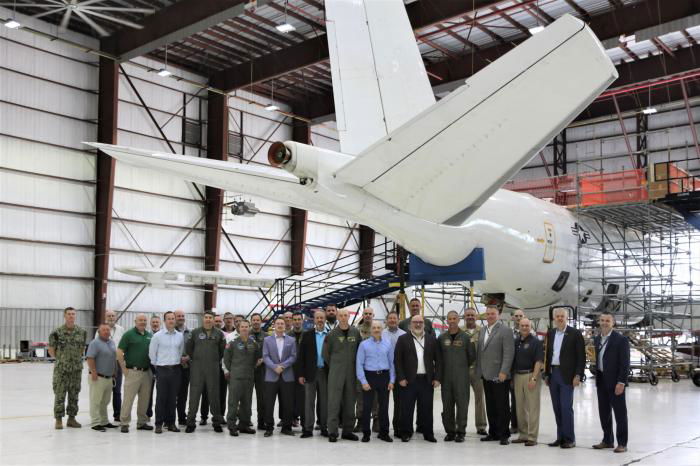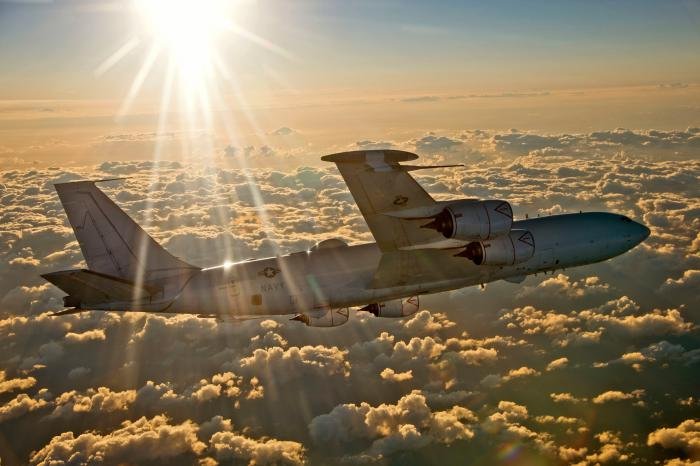The US Navy accepted its first upgraded Boeing E-6B Mercury on June 6, when pilots from the service’s Strategic Communications Wing 1 (SCW-1) flew the newly enhanced aircraft from Northrop Grumman’s Aircraft Maintenance and Fabrication Center in Lake Charles, Louisiana, to Tinker AFB, Oklahoma.
This aircraft (serial unknown) – which had been undergoing the upgrade work with Northrop Grumman in Lake Charles over the last year – is one of a number of E-6Bs that will be upgraded to ‘Block II’ standard under the US Navy’s Integrated Maintenance and Modification Contract (IMMC) by 2027. The $111m upgrade contract aims to enhance and upgrade the Navy’s Take Charge and Move Out (TACAMO) nuclear deterrence mission, ensuring that the President of the United States, Secretary of Defense and US Strategic Command remain connected to the nation’s nuclear arsenal in a degraded environment during a worst-case scenario.

The Navy’s IMMC provides for six major ‘Block II’ modifications that are designed to improve the Mercury’s command, control and communications (C3) functions, further enhancing the platform’s ability to connect the National Command Authority with both strategic and non-strategic US forces. The upgrades will extend the viable service life of the E-6B fleet in the TACAMO role.
Commenting on the arrival of the first upgraded E-6B at Tinker AFB, Capt Adam Scott – program manager for the Navy’s Airborne Strategic Command, Control and Communications Program Office (PMA-271) – said: “An incredible amount of work went into this aircraft, which can now perform its nuclear deterrence mission better than ever. During the past year, the team that fielded this capability worked tirelessly to implement improvements to deliver the Block II capability with urgency.”
According to US Naval Air Systems Command (NAVAIR), upgrade work on the second Mercury is already underway at Northrop Grumman’s Aircraft Maintenance and Fabrication Center in Lake Charles. The firm is actively working with the US Navy to reduce the turnaround time of the upgrade work to six months – which includes the implementation of span engineering, scheduling, management and production improvements – as was set out in the initial IMMC requirements.

Based on the now-matured Boeing 707-320 airframe, the initial E-6A Hermes completed its maiden flight on February 19, 1987, before being delivered to the US Navy for testing on July 22, 1988. The platform was officially renamed the Mercury in 1991 and 16 examples were delivered to the service in total. These aircraft were subsequently upgraded to E-6B standard from 1997 to 2006.
Today, the E-6B remains to be a critical part of the US Navy’s TACAMO nuclear deterrence mission. It operates across a wide frequency spectrum, where it transmits and receives secure and non-secure voice and data information that helps provide survivable, endurable and reliable airborne C3 in support of US Strategic Command and the offices of the President and Secretary of Defense. The platform also carries out Airborne Command Post missions, facilitating the launch of US land-based intercontinental ballistic missiles (ICBMs) using an airborne launch control system.
In 2021, the US Navy purchased a second-hand Boeing E-3D Sentry AEW1 from the Royal Air Force for use as a dedicated E-6B training platform. Following conversion, this aircraft will be used to further extend the operational life of the Mercury fleet by absorbing the training duties that are currently carried out by E-6B mission aircraft.

